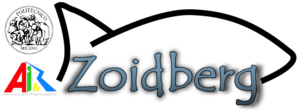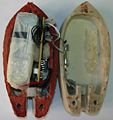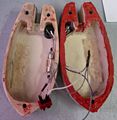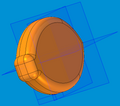ZOIDBERG - An autonomous bio-inspired Robotic fish
Part 1: project profile
Project name
ZOIDBERG - An autonomous bio-inspired robotic fish
Project short description
ZOIDBERG is a project about an autonomous bio-inspired robot. The project's aim is to realize a robotic fish actuated by a particular electroactive polymer of ICPF type (Ionic Conducting Polymer Film).
People involved
Project head
Prof.ssa Giuseppina Gini - User:GiuseppinaGini
Other Politecnico di Milano people
Ing. Paolo Belluco - User:PaoloBelluco
Students currently working on the project
Francesco Milli - User:FrancescoMilli
Maurizio Mercurio - User:MaurizioMercurio
Alessandro Nava - User:AlessandroNava
Laboratory work and risk analysis
Laboratory work for this project will be mainly performed at AIRLab/Lambrate. It will include significant amounts of mechanical work as well as of electrical and electronic activity. Potentially risky activities are the following:
- Use of mechanical tools. Standard safety measures described in Safety norms will be followed.
- Use of soldering iron. Standard safety measures described in Safety norms will be followed.
- Use of high-voltage circuits. Special gloves and a current limiter will be used.
- Robot testing. Standard safety measures described in Safety norms will be followed.
Part 2: project description
The project is composed by:
- State of the art;
- Preliminary studies and sketches;
- Design notes and guidelines;
- Description and results of experiments;
- Useful internet links: Dr. Zoidberg
- Useful other internet links: [1]
State of the art
Our Nafion EAP experiments on YouTube
Images Section
Preliminary part design
The design of the body has evolved into the current shape through many development steps, in response to the varying specifications of the on-board electronics, to changes in the manufacturing process of the hull, and for a better approach to the hydrostatic balance problem. The first two images below represents the early proposed mostly flat design, and a step of the manufacturing of a "master" hull component in a modelling clay. The third image show the proposed configuration of the tail components.









